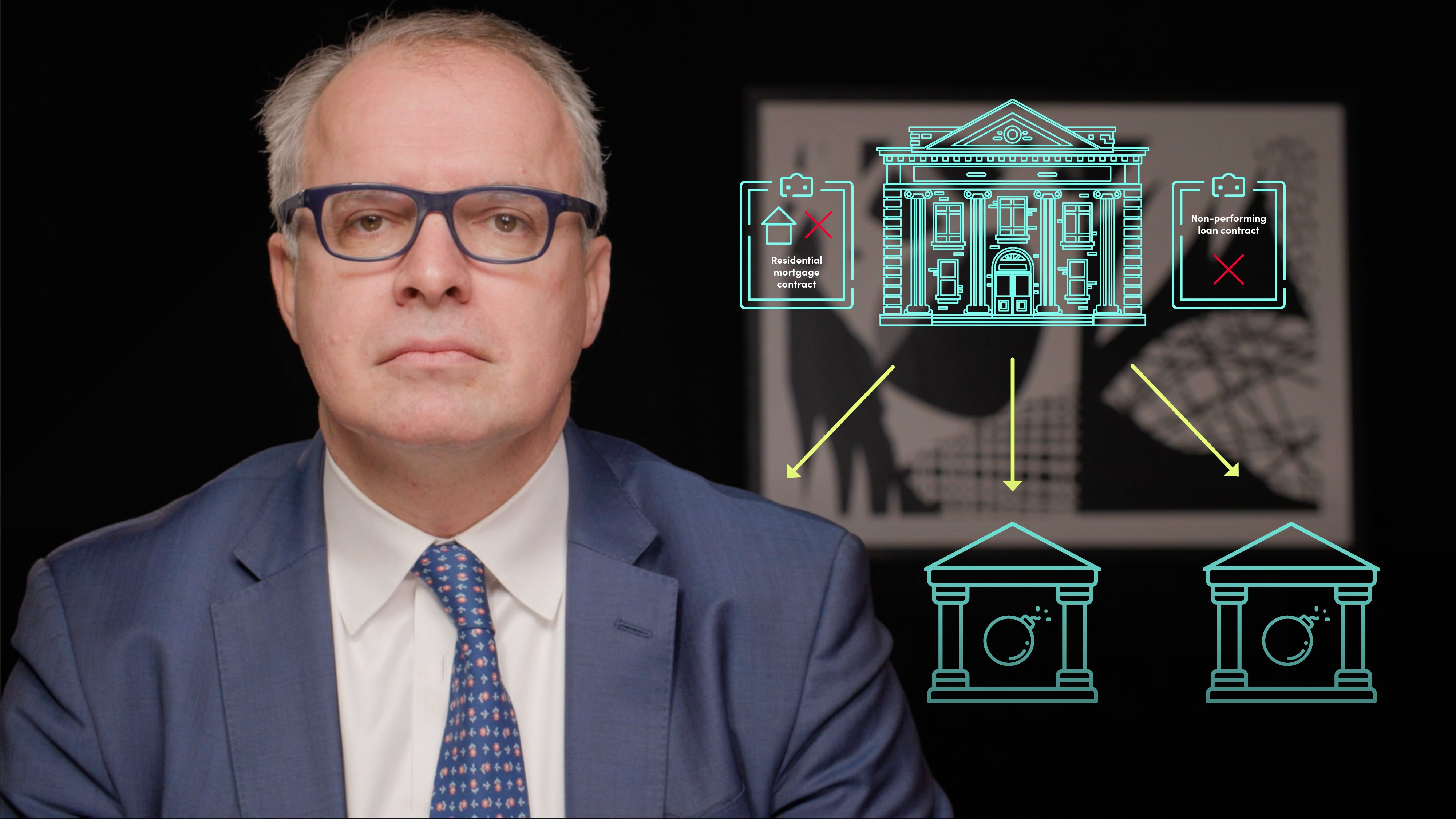
What is a Bad Bank?

Francesco Dissera
25 years: Securitisation
In this video, Francesco DIssera provides a brief introduction to what bad banks are and discusses a few real world implementations of it.
In this video, Francesco DIssera provides a brief introduction to what bad banks are and discusses a few real world implementations of it.
Subscribe to watch
Access this and all of the content on our platform by signing up for a 7-day free trial.

What is a Bad Bank?
2 mins 39 secs
Key learning objectives:
Understand what is a bad bank
Understand how the bad bank Sareb was set up in Spain
Understand the SNB's implementation of the Stabilisation Fund to help UBS
Overview:
A bad bank is a corporate structure which is set-up independently from a bank or financial organisation. It is set-up to separate a banks ‘good’ assets from its bad. The good assets are kept within the parent bank and the bad assets are housed within the bad bank.
Subscribe to watch
Access this and all of the content on our platform by signing up for a 7-day free trial.
How did the bad bank Sareb work in Spain following the subprime and credit crisis?
Sareb was established in Spain 2012 after the mortgage and credit crisis to acquire NPEs from failing Spanish banks. It’s key shareholders are existing Spanish Banks and some external investors.
How was the Stabilisation Fund used by SNB in Switzerland?
The SNB created the Stabilisation Fund, with the objective of acquiring “toxic” ABS and non-ABS from UBS. Eventually, UBS transferred approximately $38.7bn of these assets at market value to the funds. A dedicated disposal team was created within UBS to dispose of these legacy assets within a predetermined time frame. The Fund was then unwound in 2013 by UBS, achieving a small profit for the Swiss Tax payers.
Subscribe to watch
Access this and all of the content on our platform by signing up for a 7-day free trial.

Francesco Dissera
There are no available Videos from "Francesco Dissera"






















